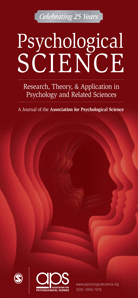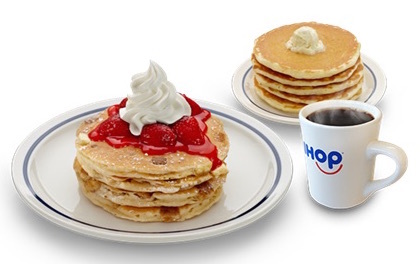Marc Abrahams's Blog, page 310
September 1, 2015
“Penises of the Animal Kingdom” poster in museum-boosting video
Jim Knowlton’s poster “Penises of the Animal Kingdom”, for which Mr. Knowlton was awarded the 1992 Ig Nobel Prize for art, is featured in this travel video. The video, made by Pommie Travels, is called “Giant Animal Penises: The Phallological Museum, Iceland”:

August 31, 2015
Melon bug and Sorghum bug ice cream
“Ice cream was made by using 0.5% insect’s gelatin and compared with that made using 0.5% commercial gelatin as stabilizing agent.”
 The two insects concerned, the melon bug (Coridius viduatus) and sorghum bug (Agonoscelis versicoloratus versicoloratus) were the subject of an investigation described in a new paper (for the journal Food Science and Technology International) by Professor Abdalbasit Adam Mariod Al-Nadif [pictured] of the Faculty of Sciences and Arts-Alkamil, King Abdulaziz University, Jeddah, Saudi Arabia, and colleague Hadia Fadul of the Department of Food Science & Technology, College of Agricultural Studies, Sudan University of Science & Technology, Khartoum North, Sudan.
The two insects concerned, the melon bug (Coridius viduatus) and sorghum bug (Agonoscelis versicoloratus versicoloratus) were the subject of an investigation described in a new paper (for the journal Food Science and Technology International) by Professor Abdalbasit Adam Mariod Al-Nadif [pictured] of the Faculty of Sciences and Arts-Alkamil, King Abdulaziz University, Jeddah, Saudi Arabia, and colleague Hadia Fadul of the Department of Food Science & Technology, College of Agricultural Studies, Sudan University of Science & Technology, Khartoum North, Sudan.
The researchers note that:
“The properties of the obtained ice cream produced using insects [sic] gelatin were significantly different when compared with that made using commercial gelatin.“
Unfortunately, the paper’s abstract doesn’t specify what the significant differences were. See: ‘Extraction and characterization of gelatin from two edible Sudanese insects and its applications in ice cream making’ Food Science and Technology International, July 2015 vol. 21 no. 5 380-391.
Note: The sorghum bug is a species of the Agonoscelis genus, which along with the Tessaratomidae family, are commonly referred to as stink-bugs. See: Nutritional value of eating stinkbugs
Also see: (Ice cream related)
• The McMath ice cream licking hypothesis
• Dr. Altschuler on … Applied Ice Cream Headaches
• Kids’ brain response to ice cream and a milkshake
Bonus: The paper cites a definition of ice cream provided by Choo et al. 2010 :
“Ice cream is a frozen and aerated dairy-based dessert that [is] usually associated with happiness, pleasure and fun. Psychologically, the consumption of ice cream evokes an enjoyable state for a person.”

August 30, 2015
Wears Wears Out
Doctor Wears confides, in a new paper, about the depths of his training:
 “Worn Out by Fatigue Training,” Robert L. Wears [pictured here], MD, PhD, Annals of Emergency Medicine, vol. 66, no. 3, September 2015, pp. 334-335. (Thanks to Ivan Oransky for bringing this to our attention.) Dr. Wears, at the University of Florida and also at Imperial College London, writes:
“Worn Out by Fatigue Training,” Robert L. Wears [pictured here], MD, PhD, Annals of Emergency Medicine, vol. 66, no. 3, September 2015, pp. 334-335. (Thanks to Ivan Oransky for bringing this to our attention.) Dr. Wears, at the University of Florida and also at Imperial College London, writes:
I was sitting quietly in our department’s faculty meeting, trying to surreptitiously catch up on some reading while appearing politely attentive. This is academic medicine’s equivalent of “just walking down the street, minding my own business”—when the equivalent of “.and then some dude shot me” jolted me back to the meeting; it was the distantly heard phrase “mandatory training.” My heart sank….
I went back to my office to do my duty. The video was called “Fatigue Training,” so napping through it somehow seemed just right. I propped my feet on my desk and settled down to protect myself against that demon, fatigue….
As I was ‘training,’ I drifted off, no doubt because— surprise—I was fatigued. I began to dream about all the mandatory training I’ve taken in the past few years, and the pile of official-looking certificates I’ve got to keep track of, and to produce at a moment’s notice to maintain hospital privileges, board eligibility, or general membership in polite society…
[Eventually] I suddenly awoke—alone, in my office, sweating, mildly tachycardic, but blessedly alone. My secretary came in to ask if I was all right. ‘I thought I heard you call out,’ she said. ‘No, not me; must have been the wind,’ I lied. ‘But I’m going to take the rest of the day off. Fatigue Training has worn me out.”
BONUS: Here is one of many fatigue training videos available to you. This particular one is for Australian truck drivers:

August 29, 2015
Inspired by pancakes: Further findings on the flatness of Kansas
Joshua Campbell and his colleague Jerome E. Dobson, inspired by the article “Kansas is Flatter Than a Pancake,” did some research on their own. Campbell tells about it in his Disruptive Geo blog:
The Flatness of U.S. States
It all started with delicious pancakes and a glorified misconception. In a 2003 article published in the Annals of Improbable Research (AIR), researchers claimed to scientifically prove that “Kansas is Flatter Than a Pancake” (Fonstad et al., 2003). The experiment compared the variation in surface elevation obtained from a laser scan of an IHOP pancake and an elevation transect across the State of Kansas. And while the researchers’ conclusion is technically correct…
Now, I can take a joke, and at the time thought the article was clever and funny. And while I still think it was clever, it began to bother me that the erroneous and persistent view that Kansas is flat, and therefore boring, would have negative economic consequences for the state. I grew up on the High Plains of southwestern Kansas…
As luck would have it, a few years after the AIR article I found an opportunity to work on this question of flatness and how to measure it. As part of my PhD coursework I was investigating the utility of open source geospatial software as a replacement for proprietary GIS and needed a topic that could actually test the processing power of the software. Combining my background in geomorphology and soil science with a large terrain modeling exercise using the open source stack offered the perfect opportunity to address the question of flatness. What emerged from that work was published last year (2014) in the Geographical Review as a paper coauthored with Dr. Jerry Dobson entitled “The Flatness of U.S. States” (Dobson and Campbell, 2014).
Here are citations for the two studies:
Dobson, J. E., & Campbell, J. S. (2014). The Flatness of U.S. States. Geographical Review, 104(1), 1–9.
Fonstad, M., Pugatch, W., & Vogt, B. (2003). Kansas is Flatter Than a Pancake. Annals of Improbable Research, 9(3), 16–17.

August 28, 2015
Evaluating a fake teacher (à la a fake babe on a dating site)
Two medical educators injected a fake teacher into an evaluate-your-teachers survey, in a medical school. Ivan Oransky, writing in MedPage Today, describes the study and the incident that motivated those two medical educators:
Dear medical school faculty members, here’s a question that may come to mind as the new academic year gets underway: What if you earned an evaluation for a course you hadn’t taught?
You might keep it to yourself, I suppose, if the evaluation was good. But if it was just average — as happened to Sebastian Uijtdehaage, PhD [pictured here], of the Geffen UCLA School of Medicine in 2006 — you might be “flummoxed.”
In fact, if you’re Uijtdehaage, the episode might raise “the sticky question of whether medical students are completing [teaching evaluations] mindlessly, without due diligence,” and might prompt you to study the subject — which Uijtdehaage and his colleague Christopher O’Neal, PhD, did.
The researchers went so far as to include a photo “of an attractive young model who, perhaps regretfully, did not resemble any of our faculty members.” That fake teacher-babe drew some responses — though fewer responses when her picture was included than when she was a mere textual description.
The study itself is: “A curious case of the phantom professor: mindless teaching evaluations by medical students,” Sebastian Uijtdehaage and Christopher O’Neal, Medical Education, Volume 49, Issue 9, September 2015, pages 928–932.

Solar powered owl systems (new patent)
In a new (07 July 2015) US patent, inventor Lucy D. Thomas of Fontana, California, describes ‘Solar Powered Owl Systems‘.
It features not only yellow LED eyes, and a 360 degree rotatable head, but also has ultrasonic screech capabilities.
Note: Patent documents are sometimes inclined towards using quite long sentences.
Bonus Question: Why?
“A pest deterrent system comprising: a deterrent assembly including; a housing having; a head portion including; at least two eyes; at least two ears; and a beak; a body portion; a left wing; a right wing; a left foot; and a right foot; at least one motion sensor; at least one speaker; a plurality of illuminators; a powerer; electrical wiring; at least one power storer; an adjustable mounting plate; a plurality of fasteners; an elevated stand assembly having; a crossbar; an elevating-rod; at least one mounting lug; and a through-pin; wherein said deterrent assembly comprises in combination said housing, said at least one motion sensor, said at least one speaker, said plurality of illuminators, said powerer, said electrical wiring, said at least one power storer, said adjustable mounting plate, said elevated stand assembly; wherein said housing in combination comprises said head portion, said body portion, said left wing, said right wing, said left foot, and said right foot; wherein said housing resembles a bird of prey; wherein said bird of prey comprises an owl; wherein said head portion of said housing comprises said at least two eyes, said at least two ears, and said beak resembling said bird of prey such that pests are visually deterred; wherein said head portion of said housing further comprises a top surface, a front face, a back surface, a front surface, a left side and a right side; wherein said at least two eyes, and said beak are located on said front face; wherein said at least two ears comprise a left ear and a right ear, said left ear adjacent said left side and said right ear adjacent said right side; wherein said at least two eyes are illuminatable via said plurality of illuminators; wherein said plurality of illuminators comprise LEDs; wherein said LEDS are yellow; wherein said at least one motion sensor is useful to send a signal to activate said plurality of illuminators and said at least one speaker when motion from said pests is sensed, said at least one speaker able to emit an audible sound; wherein said audible sound comprises a frequency of less than 20,000 Hz wherein a human is able to hear said audible sound emitted from said at least one speaker; wherein said audible sound comprises hoot noises emitted via said speaker; wherein said at least one motion sensor is located on said front surface of said head portion; wherein said head portion is able to rotate about 360 degrees; wherein a rotation is toward a direction from which motion was sensed; wherein said powerer provides power for operating said deterrent assembly; wherein said at least one power storer stores said power for operating said deterrent assembly; wherein said powerer is mounted on said top surface of said head portion; wherein said powerer comprises at least one solar panel; wherein said at least one power storer comprises rechargeable batteries; wherein said electrical wiring allows said at least one power storer to be in electrical communication with said powerer; wherein said adjustable mounting plate allows said deterrent assembly to be mounted to a planar surface; wherein said planar surface comprises a horizontal surface; wherein said fasteners are used for removably affixing said adjustable mounting plate to said planar surface; wherein said elevated stand assembly comprises in combination said crossbar, said elevating-rod, said at least one mounting lug; and said through-pin; wherein said elevating-rod further comprises a swivel; wherein said swivel comprises a ball and socket; wherein said left foot and said right foot sit on said crossbar; wherein said elevated stand assembly sits above a top surface of said adjustable mounting plate; wherein said at least one mounting lug comprises a through-aperture allowing said through-pin to pass through said elevating-rod, said elevating-rod attached to said crossbar, said crossbar holding said deterrent assembly is an elevated position relative to said adjustable mounting plate; wherein said deterrent assembly is able to be pivoted in relation to said adjustable mounting plate via said elevating-rod, said through-pin able to rotate within said mounting lug(s); and wherein said deterrent assembly of said pest deterrent system is useful to emit said audible sounds via said at least one speaker, and illumination via said illuminators and appear as said bird of prey such that said pests are visually and sound deterred from remaining within a vicinity of a location of said deterrent assembly, said deterrent assembly adjustable, and operated via natural ambient sources.“
Also see: Another rotatable-head artificial-bird (new patent) : Enhanced water fowl decoy

August 27, 2015
Trying to measure the iffiness of lots of psych research
Many psychologists try to measure things that are tough to measure — and many of those many do it iffily. The Reproducibility Project is trying to measure how iffy those measurements are. They published a study called “Estimating the reproducibility of psychological science,” about their progress.
 Benedict Carey tells about this, in a New York Times article called “Many Psychology Findings Not as Strong as Claimed, Study Says.”
Benedict Carey tells about this, in a New York Times article called “Many Psychology Findings Not as Strong as Claimed, Study Says.”
Ed Yong tells about it, in an Atlantic article called “How Reliable Are Psychology Studies?”
You might be able to tell something about it by skimming through titles and abstracts of studies published in Psychological Science.
Psychological Science is the top-of-the-line psychology research journal assembled by the top-of-the-line association of psychologists, the Association for Psychology (also known as the APA, and also known these days for the way some of its recent leaders relate to the activity that people other than those leaders call “torture”).

Paige Bebee’s excellent appendix adventure film
Paige Bebee’s short film, “The Secret of the Appendix”, is the 2015 winner of the secondary schools’ category in the annual Schools Sleek Geeks Eureka Science video prize. Behold:
The Sleek Geeks, inspiritors of the video prize, are two in number: Karl Kruszelnicki (who is, among other things a 2002 Ig Nobel Prize winner for his work with belly button lint) and Adam Spencer.
The gentleman munching in the film is Barry Marshall, who has eaten stranger things and even been rewarded, eventually, for doing so.
(Thanks to Joanne Gould for bringing this to our attention.)

The Tradition of Shoe-Throwing at Weddings
Shoe-throwing may now be mostly a political act. But not long ago, it was a common rite of marriage, writes James Crombie of Aberdeen, who has gathered some matrimonial footwear-hurling facts into a 24-page treatise called Shoe-Throwing at Weddings.
This was in 1895, when readers may have empathised with Crombie’s opening thought: “Pelting a bride and bridegroom with old shoes when they start on their honeymoon is a custom we are all familiar with, and in which many of us have participated.”
Some 113 years later, in 2008, Muntazer al-Zaidi recategorised the social role of shoe-throwing when he hurled size-10 shoes, and some words (“This is your farewell kiss, you dog”), at US president George W Bush at a press conference in Baghdad….
So begins this month’s Improbable Research column in The Guardian.
Here’s video of the press-conference shoe-throwing:
BONUS: Another shoe-throwing video (thanks to SciCurious for bringing it to our attention):

“Why does coffee make you poop?” Four videos.
Several organizations try to answer the same question (a question that is laden with assumptions): “Why does coffee make you poop?”
Discovery News:
Nickipedia:
ACS Reactions:
Nathan and Rose:
(Thanks to Vaughn Tan for bringing this to our attention.)

Marc Abrahams's Blog
- Marc Abrahams's profile
- 14 followers





